Sony Cyber-Shot DSC-TX7 is best for buy with 10 megapixels,3.5-inch LCD,Memory Stick Pro Duo and many more things….
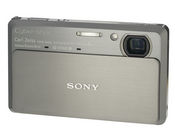
|
It seems that buttons are facing extinction, with almost every major camera manufacturer now offering at least one touchscreen model. Most seem to be aimed at gadget lovers more than photographers, though, with daft 14-megapixel sensors and gloomy small-aperture lenses.
Even tech-savvy dads need some guidance now and then, and Father’s Day (aka this Sunday) provides an excellent opportunity to offer assistance cleverly masked as appreciation.
In many households, Dad’s the official family photographer. Digital cameras have made that duty easier but haven’t helped much when it comes to capturing group photos (like kids’ soccer teams and family reunions) or those vacations to the Great Outdoors. With the new Sony Cyber-shot DSC-TX7 with iSweep Panoramamode ($350), your padre can just hold down the button as he pans across a scene for horizontally extended shots that really capture the crowd or landscape. The price is a bit steep for a last-minute present, though.
The Sony TX7 is the first touchscreen camera we’ve seen that doesn’t seem compromised in other areas. Its gadget appeal is beyond repute. The 3.5in touchscreen fills the back of the camera and the 910,000-dot resolution is incredibly sharp. It’s no less handsome from the front with its sliding metal panel in place of a normal lens cover.
The screen is extremely sensitive to touches, and the interface capitalises on it with a touch-for-spot focus option and menu options arranged in grid formation across the entire screen for easy prodding. It’s also possible to customise which options appear to the left of the preview image in the space created by the screen’s wide aspect ratio.
There are some impressive features among the mode options. iSweep Panorama lets the user capture panoramic photos simply by rotating the camera. Handheld Twilight captures six frames in quick succession, aligns them digitally and merges them to reduce noise. Anti Motion Blur takes the same concept even further: for areas where the subject moved, only one frame is used, thereby giving a sophisticated hybrid of fast shutter and low ISO speed shooting.
With point-and-shoot cameras, it’s rare that a high price tag equates to superb photo quality and/or fast shooting performance. You’re mostly paying for getting all the latest features into a very small body that you can take anywhere. The Sony Cyber-shot DSC-TX7, for example, features one of the company’s Exmor R high-speed backside-illuminated sensors, a 25mm-equivalent wide-angle lens, a high-resolution 3.5-inch touch-screen LCD, and 1080i movie capture at 60 frames per second–all in a body that’s just 0.7 inch thick. The sensor combined with Sony’s Bionz image processor is capable of a lot of things you can’t do with your typical pocket camera. And while two of those are speedy performance and very good low-light photos, its overall photo quality is less exceptional. Its photos are best suited for prints of 8×10 inches or smaller, viewing on a TV, and Web use. If your eye isn’t overly critical, its features and design definitely make it worth considering.
Available in silver, red, and dark blue versions, the camera has an elegant feel with a full metal body and nothing but its 3.5-inch high-resolution touch-screen display on back. For its features, it’s incredibly slim and will easily slip in a pants pocket or small handbag. The only physical controls are the power and shutter buttons on top; a little nub of a zoom rocker at the right corner; and playback and photo/movie mode buttons. To take a picture you simply slide down the metal lens cover and click away. After touching the camera for a bit, though, the lens cover gets slick from fingerprints making it difficult to slide up and down. You’ll also want to be careful of errant fingers getting in shots and touching the lens–a common problem with internal-lens cameras.
The video mode is important enough to have its own button. Pressing it switches to record-ready mode, with its widescreen preview filling the screen. However, it also disables lens distortion correction. While photos are geometrically straight, wide-angle videos suffer heavy barrel distortion. It’s not a disaster, though, and otherwise, video quality is fantastic. With 1080i capture in AVCHD format, high quality stereo sound, smooth autofocus, sharp details and remarkably little noise, this is the best video mode we’ve seen from an ultra-compact camera. Dedicated AVCHD camcorders are more versatile with extensive shooting options and bigger zooms, but the TX7 competes with them for quality.
Sony’s high-contrast Xtra Fine display is quite good. At its Normal brightness setting, there was no issue seeing the screen in direct sunlight. Well, after wiping away fingerprints there was no issue. If having to wipe off fingerprints is a deal breaker, you’ll want to skip this camera and probably all touch-screen models, for that matter. The TX7’s screen is very responsive to fingers, but better with the included stylus (or Paint Pen as Sony calls it) likely because you can be more precise with it. It clips onto the wrist strap and allows you to quickly poke around the onscreen menus along with the in-camera retouching and painting tools (you can add stamps, frames, or draw on pictures) all while keeping the screen free of fingerprints.
The results of our photo tests were less dramatic, with the lens failing to capture pixel-sharp images, but the automatic mode gave reliably solid results. The back-illuminated 10-megapixel sensor produced significantly less noise than 14-megapixel sensors at high ISO speeds, helping to offset the disadvantage of the dark f/3.5-4.6 aperture.
Sony’s touch-screen interface makes settings easy to find. Tap the Menu icon in the upper left corner and a panel of available shooting options slides out as well as a Toolbox icon to take you to a secondary menu for general settings. Back out to the main screen for framing shots and down the left side is a row of four customizable shooting function icons (changing them is a simple drag-and-drop procedure). The options now include a one-press record button for movies. On the right side of the screen are shooting mode and playback icons. And if you don’t want to see anything but what’s in the lens, a simple tap and swipe on the left side hides everything else.
TransferJet is best suited for those with lots of cash to burn and who are already living a Sony-made lifestyle. In fact, if you own a Web-connected Sony HDTV, the experience is great. Connect the TransferJet Station to the USB port on the TV and set the camera down on top of it and it near instantly starts a slideshow of your photos. The wireless connection was fast enough to playback AVCHD movies without issue, too. And if you take a lot of photos and don’t want to mess with cables or taking your memory card in and out, you simply connect the Station to your computer, place the camera on top, and start the transfer.
On the bottom under a locking door is the battery/Memory Stick compartment, a proprietary connector for use with the included multioutput dock, and a tripod mount. Like all of Sony’s 2010 Cyber-shots, the TX7 accepts both Memory Stick Pro Duo cards and SD/SDHC cards for memory. There’s a single slot for both card types next to the battery located in a compartment in the bottom of the camera. The battery cannot be charged in the camera, which is a shame considering the battery life is really short. There is an AC adapter sold separately for connecting to the bundled dock, but it will not charge the camera. Presumably it’s just to power the camera while using its USB, AV, and HDMI ports.
Sony keeps shooting options geared toward snapshooters on the TX7. Though you won’t find full control over aperture or shutter speed, you do get something for just about every point-and-shoot user. Pop open the Shooting Mode menu and you’ll find a Movie mode capable of 1080i HD-quality video in either AVCHD or MPEG-4 formats with use of the optical zoom while recording; Program Auto with access to ISO, exposure, white balance, focus, and metering; Sony’s Intelligent Auto; Easy mode that takes away all but a couple basic shooting options; and SCN, which lets you select from 12 scene situations, but automatically handles all other settings.
Then, there are the more specialized modes. The Intelligent Sweep Panorama option lets you shoot horizontal or vertical panoramas with one press of the shutter release; this is unlike other cameras that require you to take several shots. It’s been updated for 2010 on its models that use the Exmor R sensors. This new version–designated by Intelligent–automatically detects faces and moving subjects to avoid distortion. It’s definitely one of those features you might not care about until you try it. Once you realize that it’s fun and works well, you end up using all the time. Then there are the Anti Motion Blur and Hand-held Twilight modes. Both use the camera’s capability to quickly capture six images and combine them into one photo with less blur, lower noise, and better detail than you would otherwise get with just one shot. The results are impressive as long as you don’t look too closely at the images at full size. They are usable at 8×10 inches or smaller, though. There’s also a Backlight Compensation HDR mode that takes two shots at different exposures to help improve shadow and highlight detail.
It’s disappointing that the TX7’s photos are no better than from cameras costing half as much. Ergonomics could be better too, as the enormous screen leaves little space to hold onto. However, the video mode alone is worth the asking price, and it’s great to get both quality photos and videos from such a compact package.
Resources :expertreviews.co.uk,reviews.cnet.com,expressnightout.com
Click On Adds To Buy

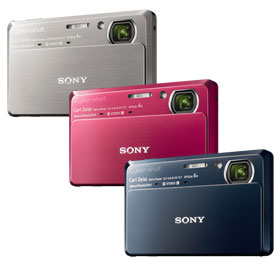
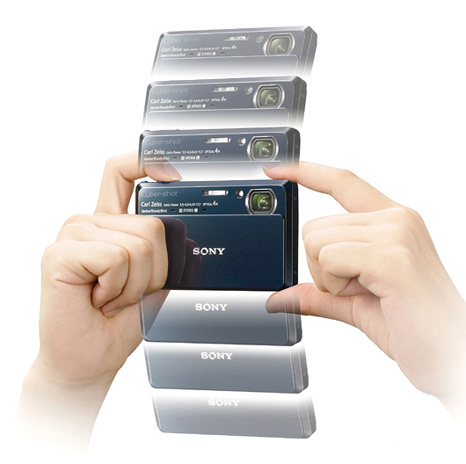
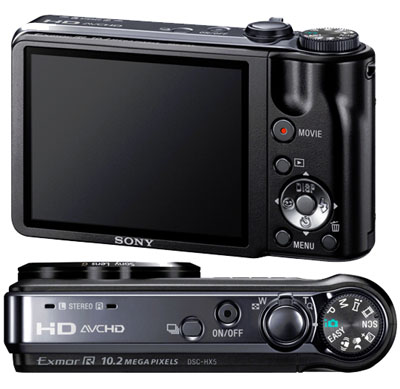
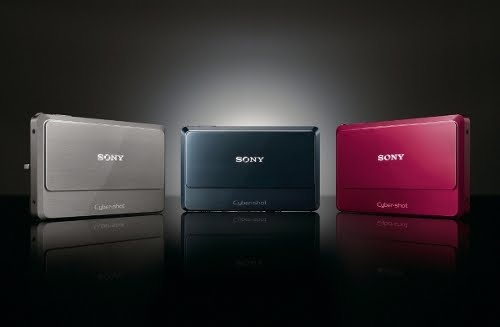
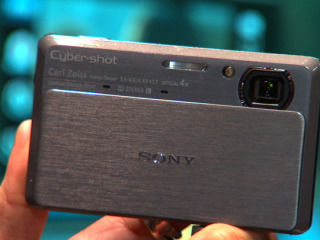
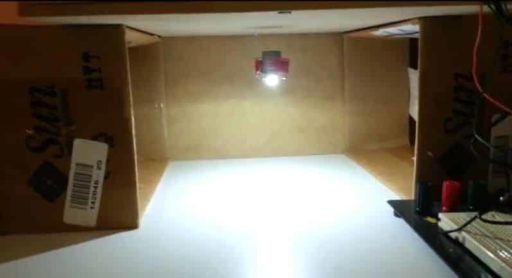
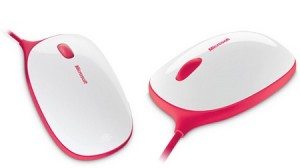
IF you were to buy a similar camera to Sony Cybershot DSC-TX7 which one would it be and Why? Thank you!
Jim
it is the worst camera i have ever seen in my life. Thanks to old cameras with film.